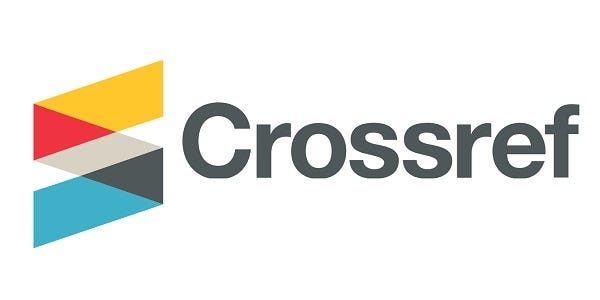Popular English Songs in Tiktok to Teach English Vocabulary: A Mixed-Method Study
DOI:
https://doi.org/10.36663/joes.v5i1.964Keywords:
Vocabulary Acquisition, TikTok, English Language Learning, Student EngagementAbstract
Although TikTok has been widely utilized as an educational medium, there remains a lack of empirical research examining its specific impact on vocabulary acquisition. Therefore, this study examined the impact of using popular TikTok songs as a medium for teaching English vocabulary to students at Madrasah Tsanawiyah Negeri 2 Buleleng. With a mixed-methods approach, the research integrated a quasi-experimental design with qualitative observations to assess the effectiveness of TikTok-based vocabulary learning compared to conventional teaching methods. This study involved two groups: an experimental class, where students learned vocabulary through selected TikTok songs, and a control class, which followed a traditional textbook-based approach. Data were collected through pre-tests and post-tests to measure vocabulary acquisition, along with classroom observations to evaluate student engagement and participation. The findings revealed a significant improvement in vocabulary mastery among students in the experimental group, with their average score increasing from 63.52 in the pre-test to 83.22 in the post-test. Meanwhile, students in the control group showed only a slight improvement, from 64.00 in the pre-test to 67.76 in the post-test. The implications of the significant improvement in vocabulary mastery among students in the experimental group suggest that integrating popular TikTok songs into English vocabulary instruction can effectively enhance learning outcomes. This approach not only improves students' vocabulary acquisition more substantially than traditional methods but also indicates that engaging, culturally relevant digital media can serve as a powerful tool to boost motivation, participation, and confidence in language learning. This study highlights the potential of social media as an educational tool and encourages educators to explore creative, student-centered approaches to enhance language learning outcomes.
Downloads
References
Adnyani, N. W. S., & Dewi, A. A. I. B. F. (2020). Teaching English vocabulary using songs. Yavana Bhasha : Journal of English Language Education, 1(1), 88. https://doi.org/10.25078/yb.v1i1.1381
Amelia, R., Agustang, A., & Agustang, A. D. M. P. (2022). Perempuan dan Tiktok: Studi tentang eksistensi diri dan tubuh sebagai konsumsi publik perempuan milenial mahasiswa FIS-H Universitas Negeri Makassar. Jurnal Sosialisasi,9(3), 159-168
Anita, F., & Susilawati, L. (2018). Keterlibatan peserta didik dalam pembelajaran Bahasa Inggris melaluiProject-Based Language Learning. Jurnal Pendidikan Bahasa, 7(2), 428–435.
Astin, A. (1984). Student Involvement: A development theory for higher education. Journal of College Student Development, 40, 518-529.
Burhayani. (2013). The effectiveness of teaching vocabulary through songs to the second years students of Ikatan Keluarga Kesejahteraan Tentara (IKKT) Elementary School West Jakarta. In 2nd International Seminar On Quality and Affordable Education (ISQAE) (pp. 69–73).
Cameron, L. (2001). Teaching language to young learners. Cambridge
Creswell, J. W. (2014). Research design: Qualitative, quantitative and mixed methods Approaches (4th ed.). SAGE Publication Inc.
Gita, A. I., Wedhanti, N. K., & Budiarta, L. G. R. (2021). Song for teaching English vocabularies in the fourth grade students. Jurnal Pendidikan Bahasa Inggris Undiksha, 9(2), 164. https://doi.org/10.23887/jpbi.v9i2.35850
Harmon, J. M., Wood, K. D., & Kiser, K. (2009). Promoting vocabulary learning with the interactive word wall. Middle School Journal, 40(3), 58–63. https://doi.org/10.1080/00940771.2009.11495588
Kahu, E. R. (2011). Framing student engagement in higher education. Studies in Higher Education, 38(5), 758–773. https://doi.org/10.1080/03075079.2011.598505
Oktaviani, H. (2021). The effect of using songs to increase young learners' vocabulary achievement through WhatsApp. Jurnal Ilmiah Spectral, 7(2), 75–85. https://doi.org/10.47255/spectral.v7i2.72
Permana, I. G. Y. (2020). Teaching vocabulary for elementary school students. The Art of Teaching English as a Foreign Language (TATEFL), 1(1), 1–4. https://doi.org/10.36663/tatefl.v1i1.56
Pramesti, R. D., Padmadewi, N. N., & Wahyuni, L. G. E. (2025). Duolingo: A qualitative study on vocabulary acquisition. The Art of Teaching English As a Foreign Language (TATEFL), 6(1), 41–52. https://doi.org/10.36663/tatefl.v6i1.942
Putri, M. W., Juniarta, P. A. K., & Wahyuni, L. G. E. (2022). The implementation of songs in teaching English for young learners in online learning context. The Art of Teaching English As a Foreign Language (TATEFL), 3(1), 49–58. https://doi.org/10.36663/tatefl.v3i1.251
Sofeny, D., Fadhilawati, D., & Hidayah, N. N. (2022). Boosting the English vocabularies of young learners through Tik-Tok application in digital era. Jurnal Sinestesia, 12(1), 58–65.
Thornbury, S. (2002). How to teach vocabulary. Longman.
Trisnawati, K. A., Utami, I. G. A. L. P., & Suprianti, G. (2024). Teaching showing ability through songs: How effective is it for students listening comprehension?. The Art of Teaching English As a Foreign Language (TATEFL), 5(2), 153–161. https://doi.org/10.36663/tatefl.v5i2.871
Downloads
Published
How to Cite
Issue
Section
License
Copyright (c) 2025 Stefanni Nanda Romi

This work is licensed under a Creative Commons Attribution-ShareAlike 4.0 International License.
https://creativecommons.org/licenses/by-sa/4.0/












